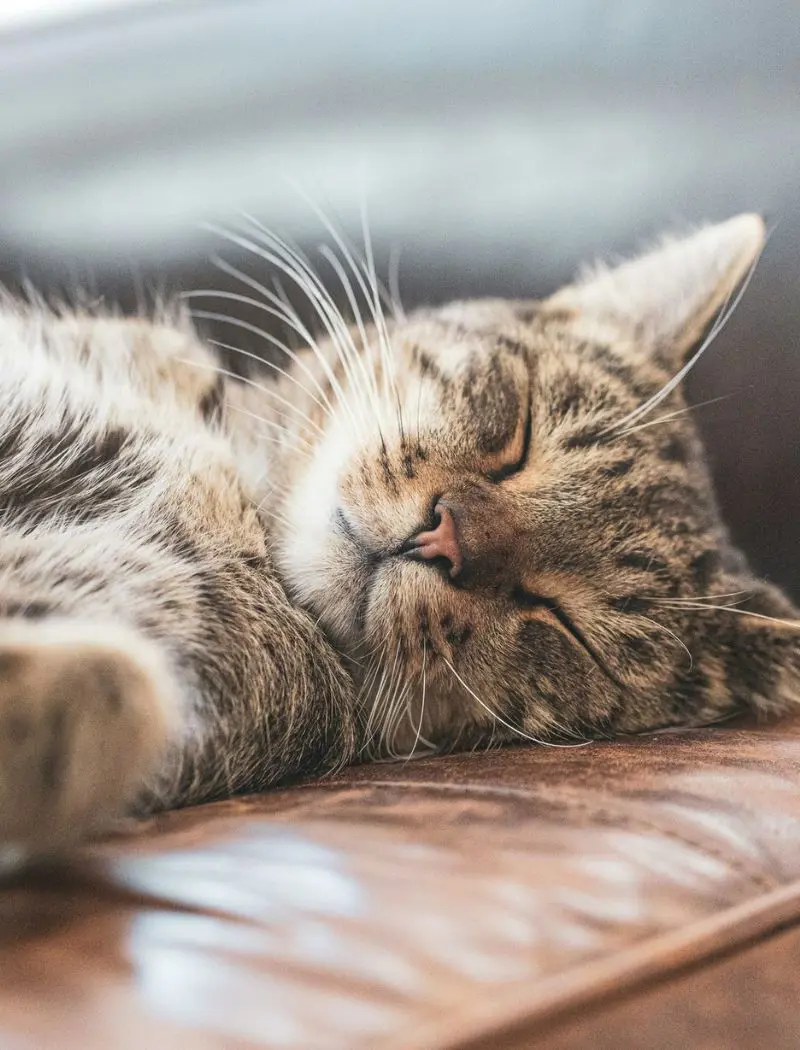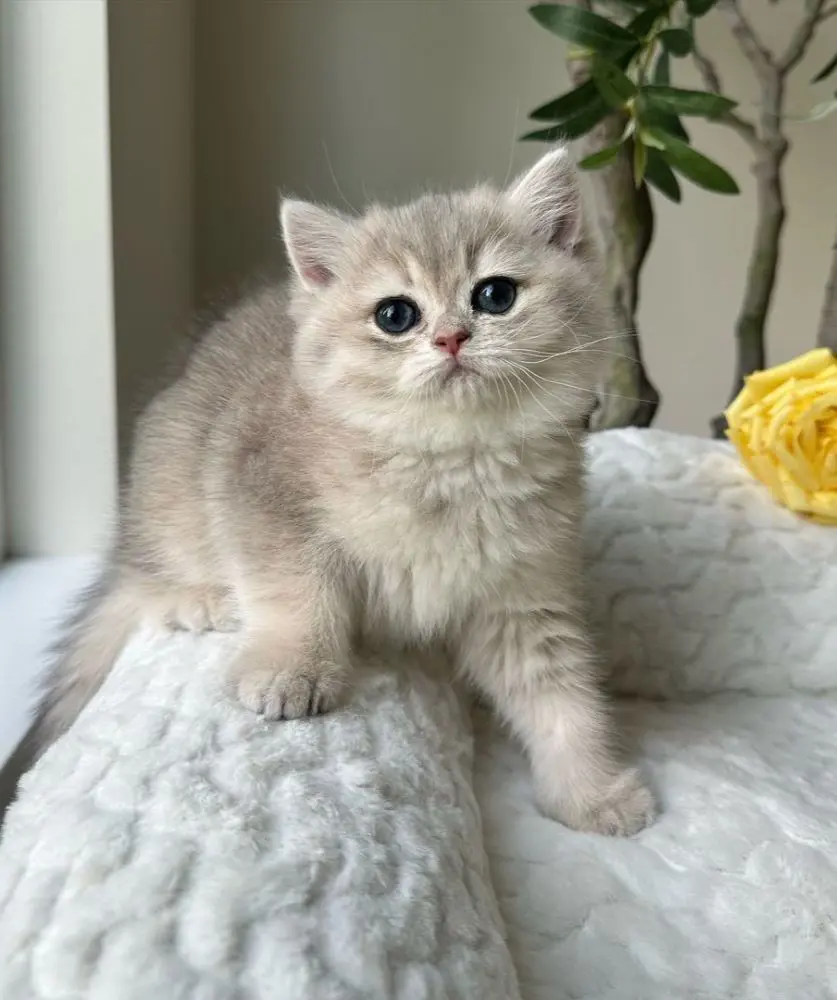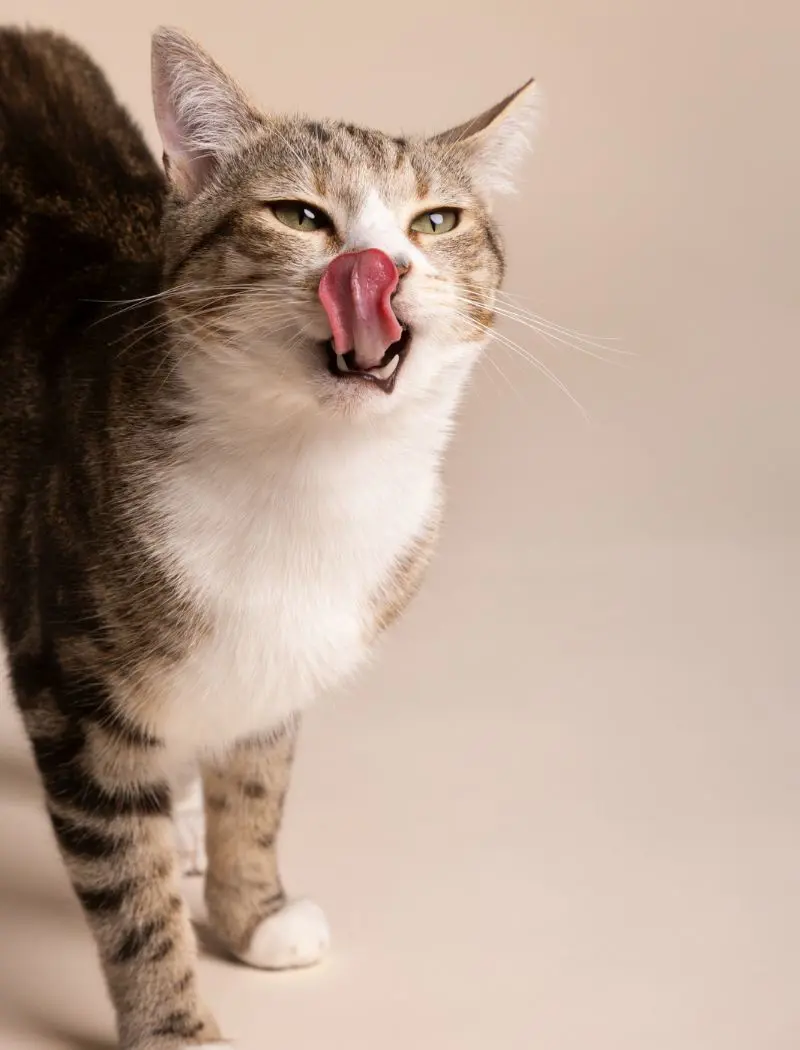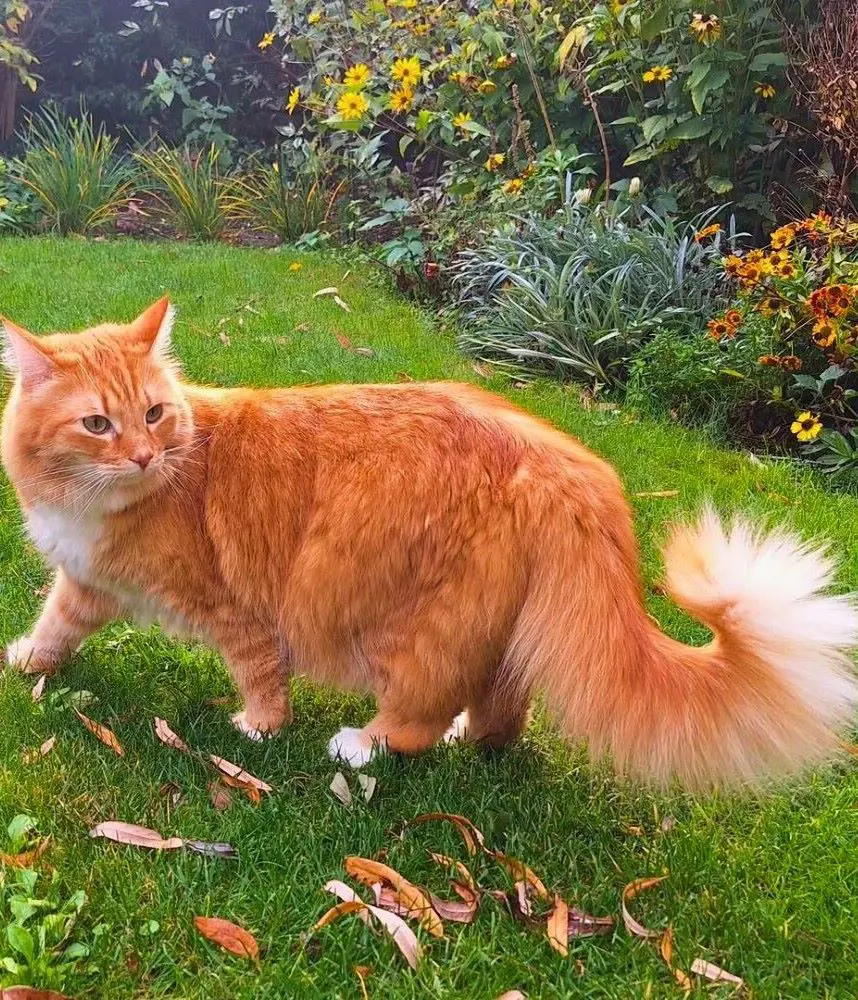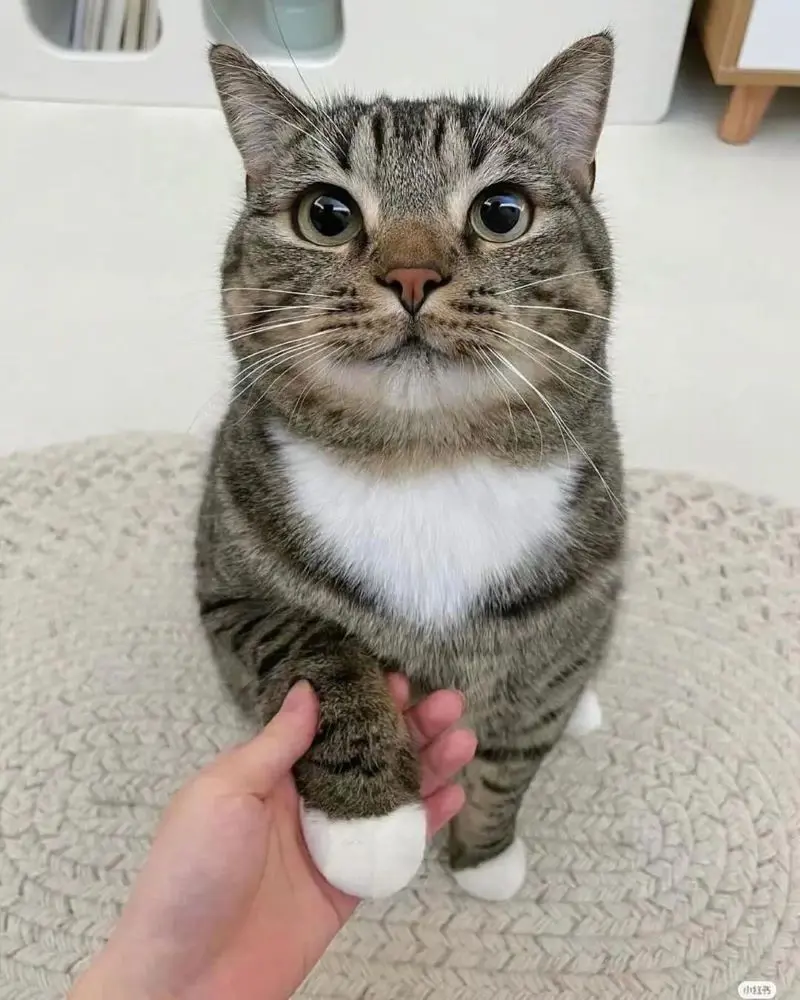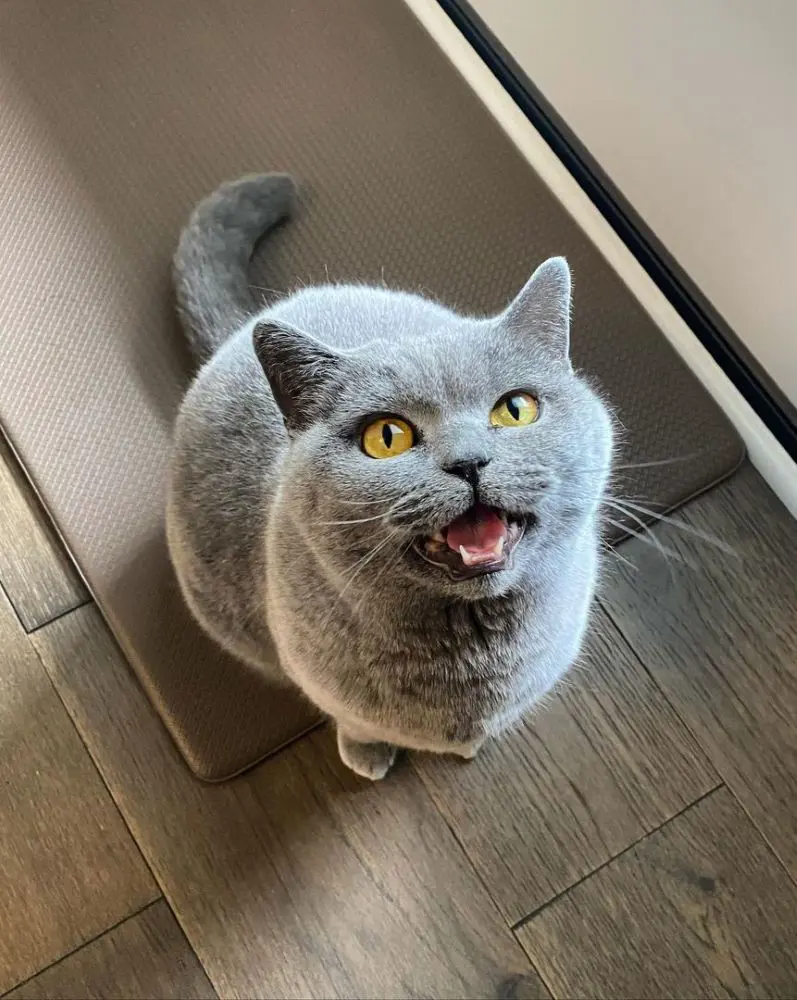Why Do Cat's Tails Twitch?
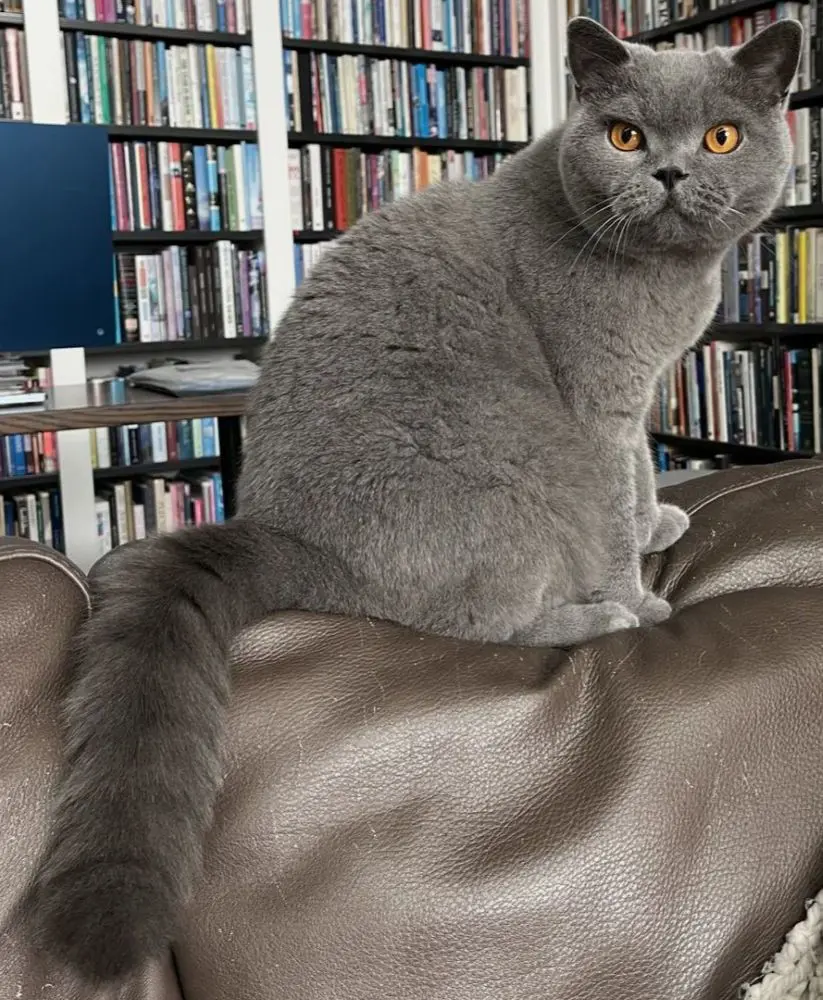
Until scientists come up with a device to read minds, cat owners are limited to reading the body language of their pets to communicate. And, you'll be surprised by what you can learn by simply understanding the movements and postures a cat makes during different emotional states.
A cat's tail is directly linked to its nervous system; when a cat experiences a mood shift, multiple nerves get activated, stimulating the cat to make involuntary twitches. Apart from some exceptions, tail twitching is an instinctual behavior, making it common in most cats.
Here are the major emotions that can directly trigger tail twitches in felines:
1. Excitement
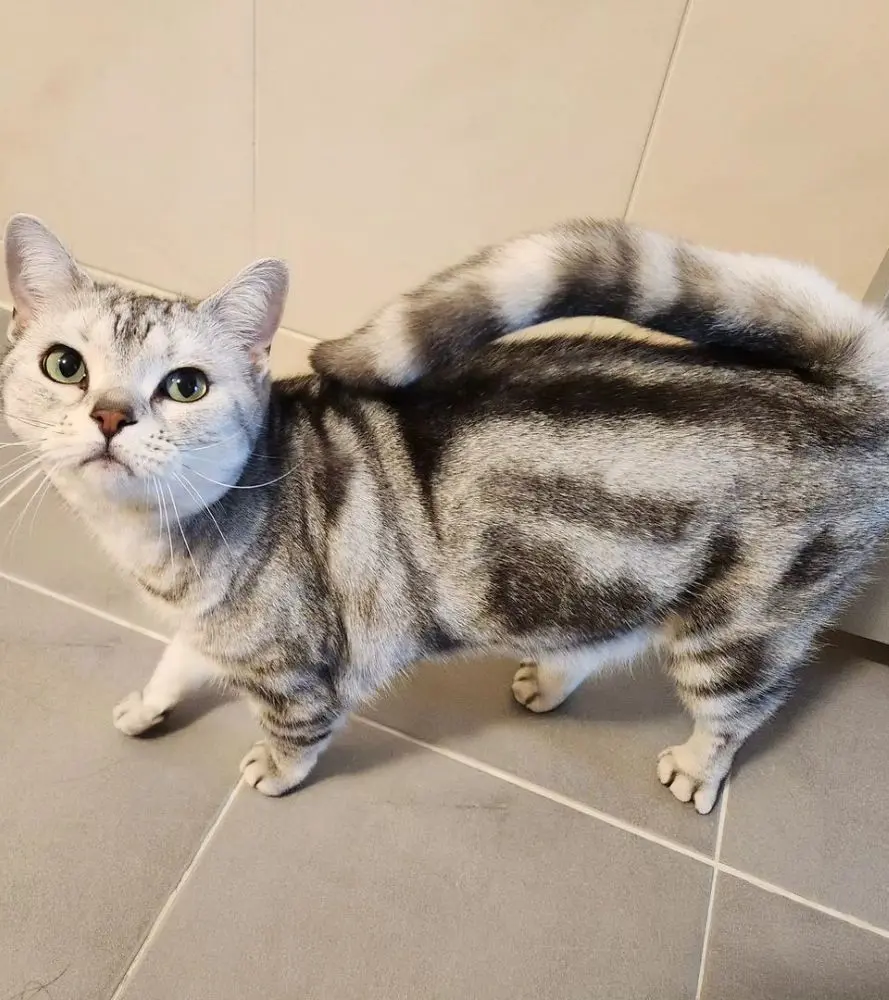
As twitching is often connected to cats' body language, they repeat it frequently when excited. When a cat twitches its tail, especially at the tip, it is a strong sign that the feline is excited. The feeling can emerge from seeing their owners after a long day or due to a delicious meal.
If a cat is excited, its tail normally flicks rapidly at the tip; the excitement-triggered movement is involuntary, often caused by a rush of adrenaline and an engaged nervous system.
Besides the typical tail movement, the cat may also meow louder than usual or give off a high-pitched purr. As long as the cat is not excited to destroy a valuable item or furniture, these twitches are harmless.
2. Irritation
Cat tail vibration can mean a feeling of anger or irritation, usually reminding humans or other animals not to come closer. If a cat twitches its tail when you are petting it while also maintaining strong eye contact, it is a classic sign that the cat is not in a playful mood.
These cat tail twitches derived from a negative emotion can often vary from quick flicks to full tail swishing. A mildly irritated cat may make sharp movements at the tip of the tail; it is usually a reminder that the kitty is annoyed but not highly agitated.
On the other hand, a full tail swishing shows that the cat is more irritated. During this involuntary twitching, the tail will move back and forth with high intensity. Meanwhile, when a cat reaches the highest level of irritation, it can start thumping its tails against the ground or furniture.
3. Pain or Discomfort
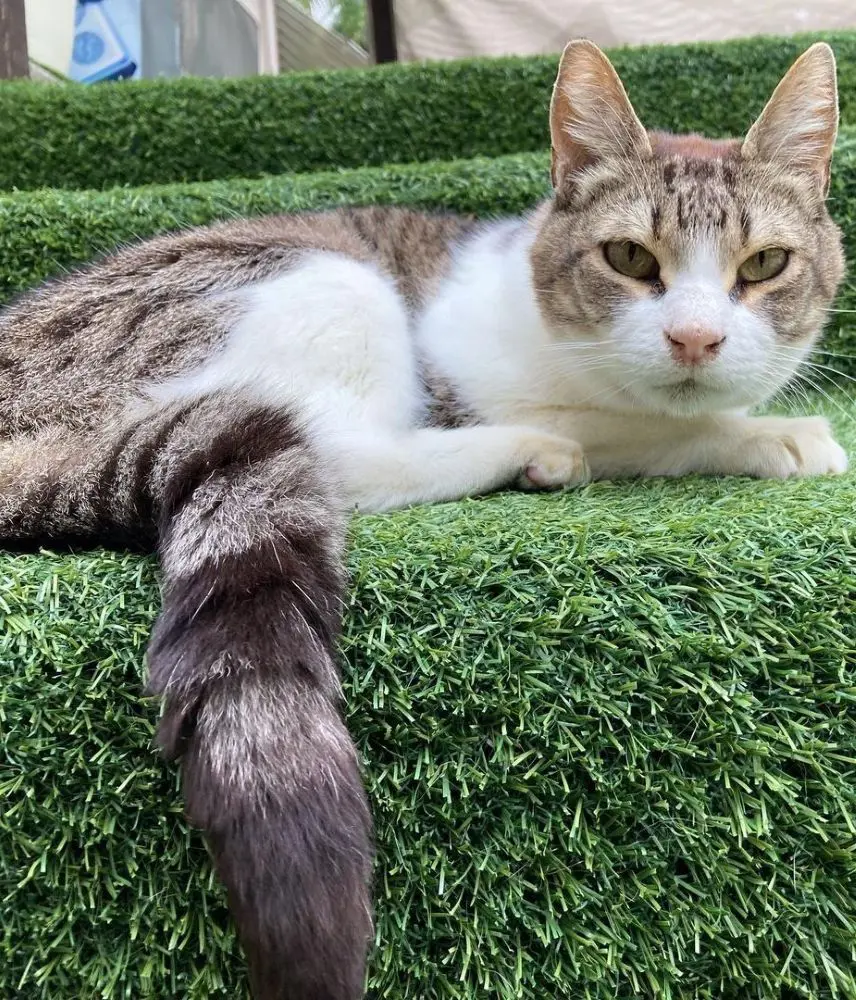
While in pain, a cat may move its tail as a subtle indicator of discomfort. Unlike the visible swishing resulting from irritation, pain-induced tail movements are usually more tense.
Generally, cats in pain might make low, jerky twitches; these movements are restrained and less expressive as the cat may be focusing energy inward to manage the pain, instead of displaying it externally.
In extreme cases of trauma, the cat may tuck its tail close to the body or keep it hanging low. If the cat is touched near a painful area, it may also suddenly flick its tail.
4. Focused Attention
You may have noticed your cat in an attentive position; their shoulders should be hunched and hind legs slightly tucked under as if they are ready to spring into action. In addition, the tail makes a rhythmic flick at the tip, mimicking the movement of a snake.
The posture and movement are natural in cats which they inherited from their wild ancestors. In the wild, felines have to stalk prey for hours and even days for a successful hunt. This instinctive behavior is inherited at birth, so don't be amazed if you see your kitten in a stealth position like it's trying to hunt invisible prey.
5. Curiosity or Interest
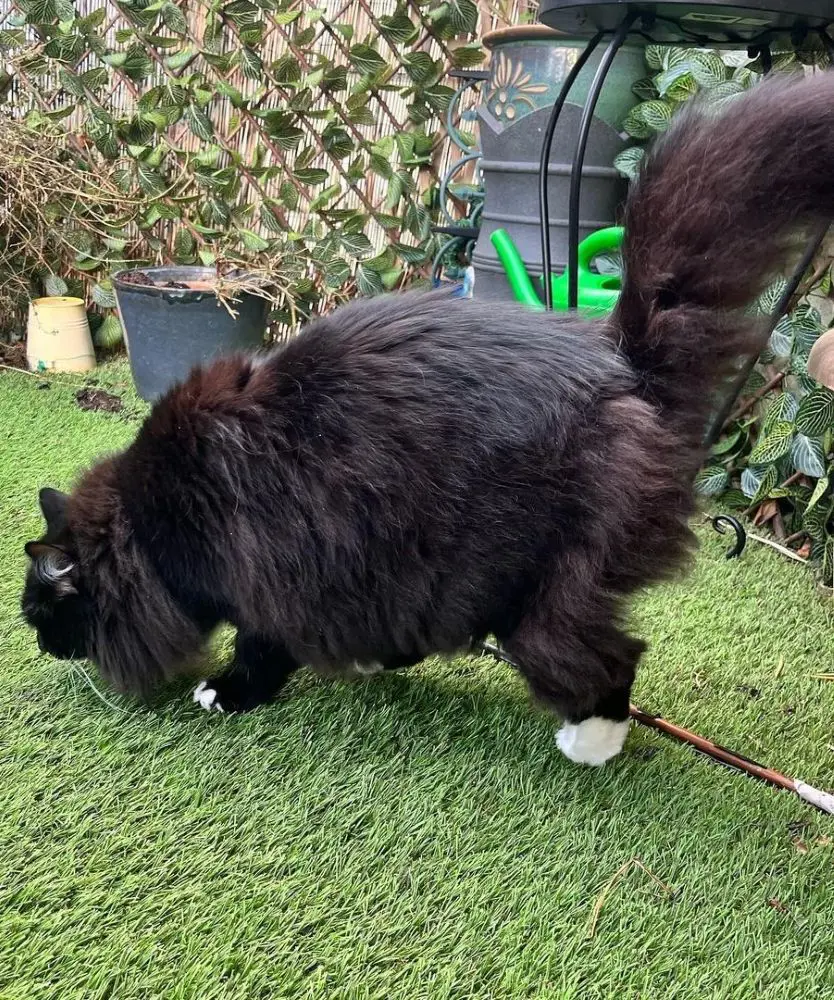
Due to their curious nature, cats explore nearby surroundings with their heightened senses. The feeling of curiosity comes from their natural hunting instincts and territorial behavior, which drives them to inspect new things.
Whether watching something from a distance or following a moving object, cats remain attentive; they are always ready to pounce if something catches their interest.
A cat tail twitch caused by curiosity regularly leads to the tail getting upright with a little curl at the tip. The posture, with the tail held steady, shows attentiveness. Besides this, a cat may also communicate their interest using a low swish; the tail moves rhythmically from side to side at a measured pace.
6. Sleep Movements
Felines moving in their sleep is not the same as sleepwalking in humans. When cats twitch or make small movements during sleep, these motions are considered controlled responses tied to the REM (rapid eye movement) stage of sleep, when dreaming is most active. On the contrary, sleepwalking in humans is usually linked to sleep disorders, but typical REM twitches and minor motions are normal.
In cats, the brain is highly active during REM sleep, replaying and processing events from when they are awake. This brain activity often stimulates motor functions that can trigger minor movements like twitching paws, whiskers, or tails.
However, these movements are limited as a natural paralysis mechanism prevents felines from out complex or dangerous movements.
7. Communication with Other Animals
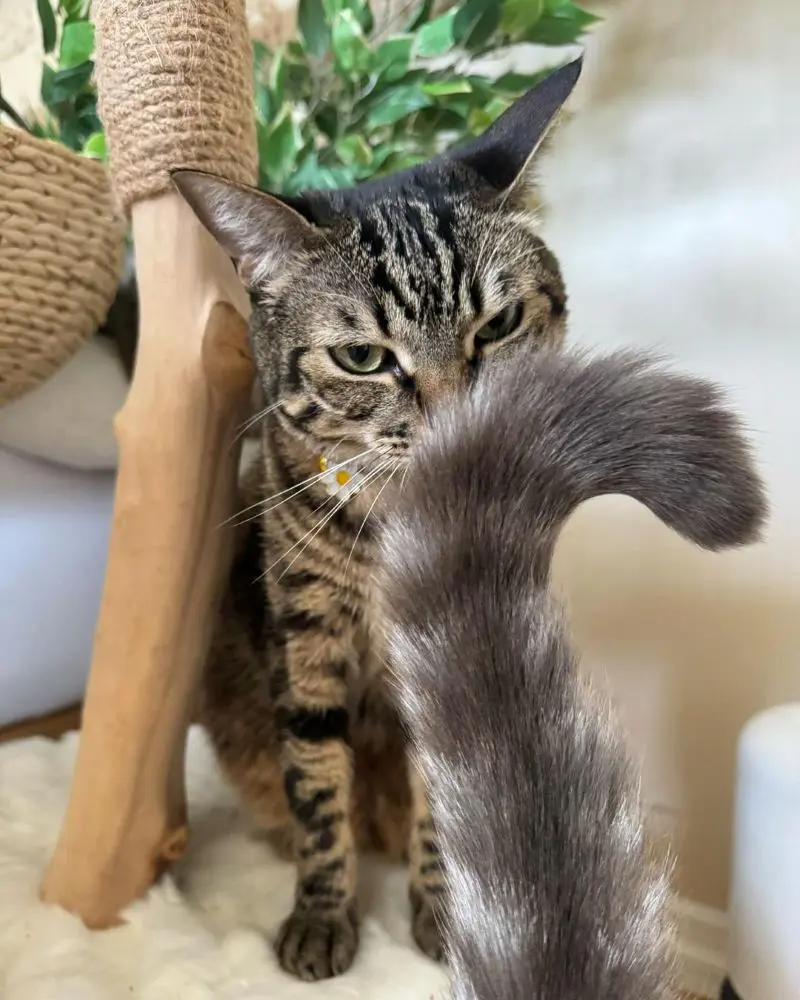
Cats communicate with other cats and animals through their body language, of which the tail plays a significant role. While greeting friendly animals, your pet may have a more relaxed posture; showing a straight or hooked tail. This is usually an invitation to show other animals that they can come closer.
On the other hand, a wagging tail or a tail kept low to the ground as a sign of hostility. This can be interpreted as a warning to not approach the cat.
Besides their body language, monitor any change in vocalization to understand their mood swings and predict any dangerous behavior.
8. Hunting Instinct
Before they were domesticated, cats were successful hunters in the wild. However, hunting in the wild is not a piece of cake. Felines often go stealth on their prey, stalking their prey for hours. Their hunting nature made cats extremely alert and patient.
Domestic cats no longer need to hunt, thanks to their friendship with humans. But, any cat owner can tell that their beloved pets still retain their love for stalking. You might have noticed your cat becoming extremely attentive while looking at a passing bird or squirrel.
Along with an alert posture, cats might make short tail twitches to show that they are actively hunting or mimicking one. Also, monitor unique chattering or chirping noises that your cat might emit while they are engaged.
9. Playfulness
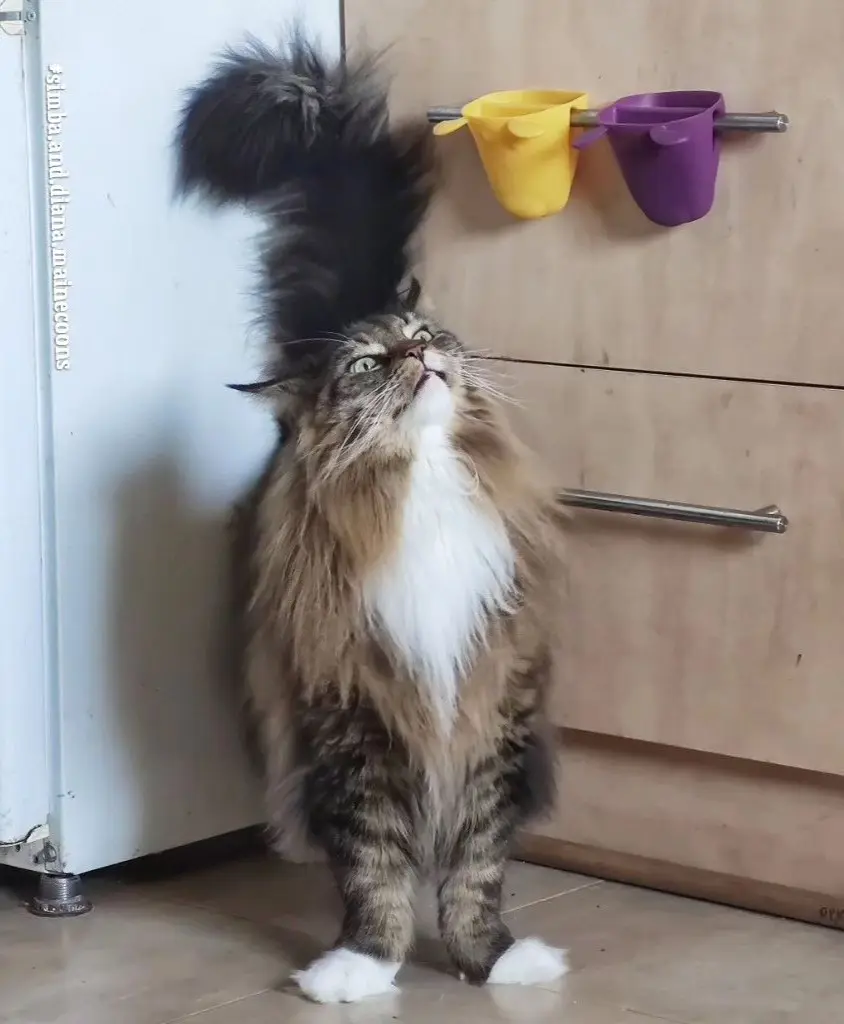
Cat tail twitching at tip, particularly with lively and exaggerated movements, is a sign of playfulness. When a cat is feeling playful, it might hold its tail high, with the tip flicking or making quick swishes. Occasionally, the motion is accompanied by a slightly puffed-up tail, a signal for excitement without aggression.
Due to minor similarities, playfulness is often mistaken for aggression, or vice versa. Body postures mutual to these two opposite emotions, including a pouncing position, ears upright, and more, can cause confusion in novice pet owners.
Depending on the breed, a cat needs daily exercise and constant mental stimulation to prevent boredom and other issues caused by a lack of activity. Your cat acting playful is a healthy sign that the pet can keep itself focused and physically active, helping in sound sleep and avoiding the feline from indulging in a destructive behavior.
10. Frustration or Confusion
When a cat is frustrated or confused, its tail movements are often a blend of agitation and hesitation, reflecting its uncertainty or annoyance. These tail motions usually consist of quick shakes at the tip or a slower stiff swishing from side to side.
Unlike the steady movements seen in relaxed curiosity, these tail actions show that the cat is unsure or irritated. Your cat can become frustrated if it can't get something it wants; these can include a digital image on a phone a bird outside their windows. Similarly, confusion can occur if the cat comes across something unfamiliar, like a new piece of furniture or a new toy.
In addition to tail movements, a frustrated or confused cat will often appear tense and alert. The ears may flick back and forth as the cat processes its surroundings, signaling indecision or minor irritation. Sometimes, you might even see a frustrated cat let out a soft huff or a low growl.
11. Fear
Fear is a defense mechanism in most animals, including cats, that triggers the flight response while faced with imminent danger. Normally, a cat's reaction to fear is making vocal hisses and even amping up their bodies to look bigger.
However, when a cat is too scared to make the aforementioned responses, it may make sudden tail twitches as a way to signal their agitation. Alternatively, the cat may also tuck its tail between its legs when fearful or anxious.
12. Attention Seeking
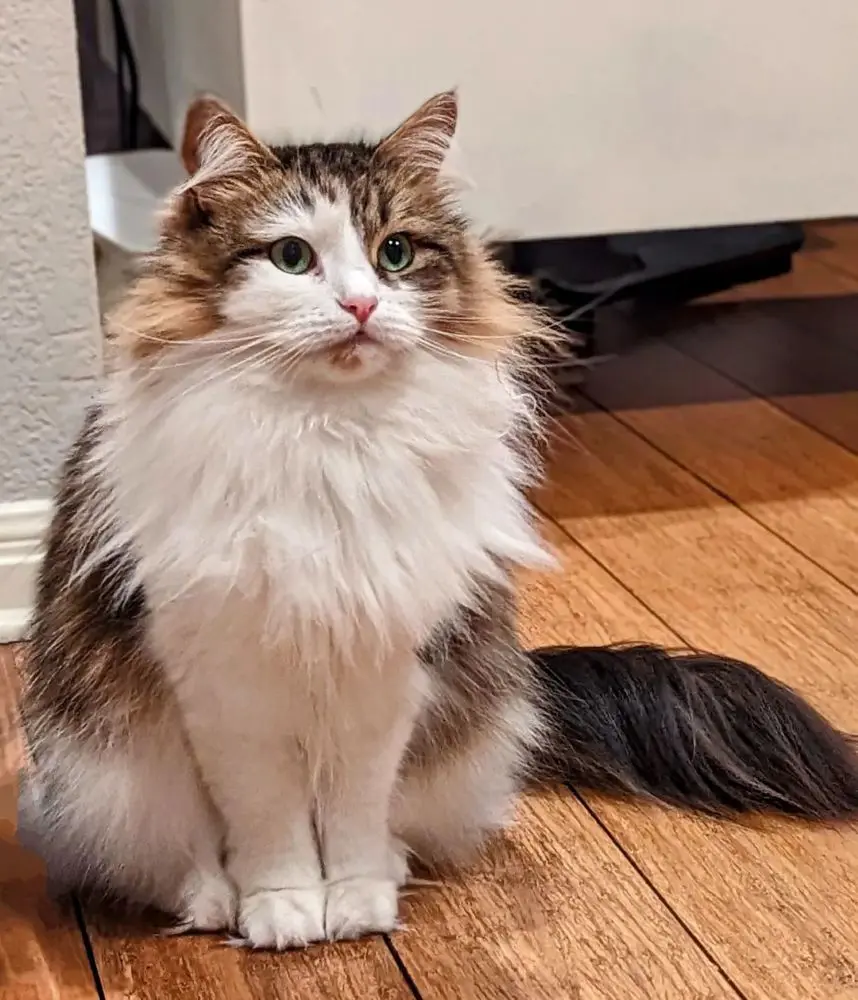
When a cat twitches its tail to seek attention, the movement is often subtle yet deliberate. You may notice the tip of the tail flicking or quivering, usually while the rest of the tail remains mostly still.
The tail twitching is often accompanied by other signs that your cat is trying to get your focus, like direct eye contact, vocalizations, or rubbing against your legs. The twitch itself can look like a gentle, rhythmic movement, often directed toward you; it’s not the same intense flicking that cats display when agitated or annoyed.
13. Temperature Regulation
While rather rare, tail twitching has been observed in some cats as a way to regulate body temperature. This behavior is mostly observed during summer when the cat has to lose heat to cool off.
The tail twitching is a simple up-and-down motion of the cat at a specific rate. This movement helps bring in cool air, helping the cat lower temperatures mostly in the lower parts of the body. On the other hand, during winter, the cat may tuck its tail inwards to avoid losing heat.
14. Relaxed Stretching
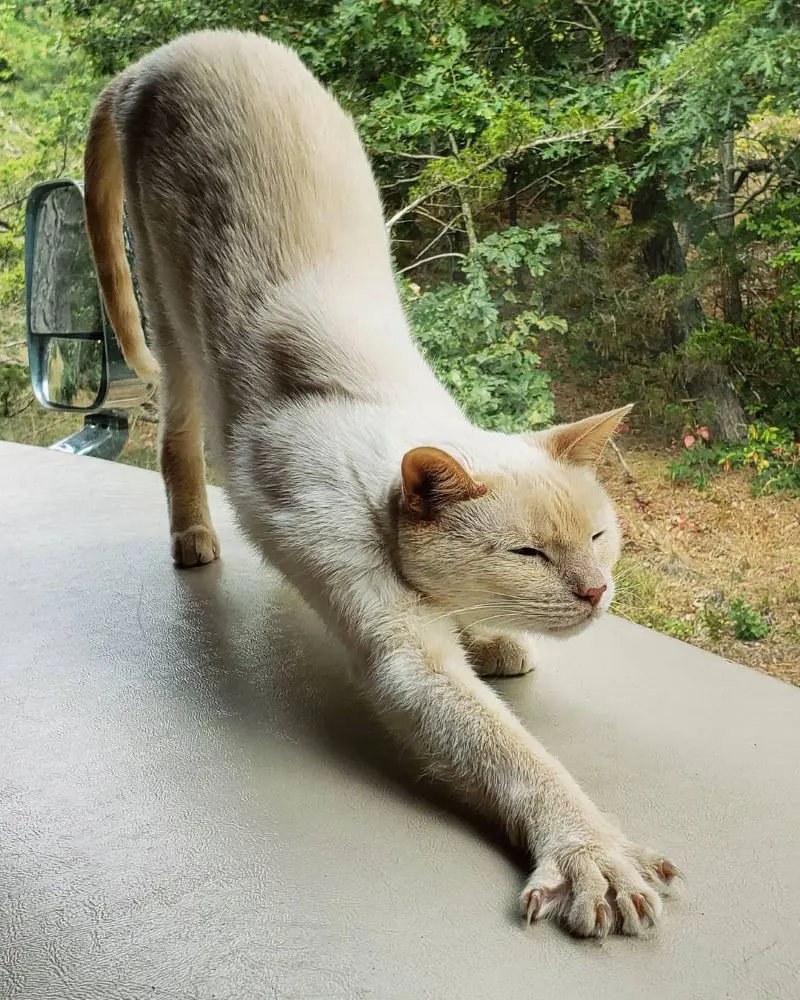
Cats sometimes twitch or move their tails as part of a full-body stretch, though the tail movement itself isn’t specifically for stretching purposes. When cats stretch, they often extend their front legs, arch their back, and push their rear up, which may include a slight flick or twitch at the tail’s tip.
In a full stretch, you might see the cat’s tail lift and even curl slightly, often followed by a small flick or twitch at the end. This final tail movement may help the cat adjust its balance as it completes the stretch.
15. Marking Territory
As territorial animals, cat instinctively marks their territories by spraying urine; the odor from the urine is usually stronger than normal pee. This is a reminder for potential invaders to stay away.
However, not all animals back down without a fight. Some may invade the territory, expecting a physical confrontation with the cat. Normally, a cat will make a straight posture while moving its erect tail from side to side to show their dominance over the other animal.
Do Cats Twitch Their Tails When Happy?
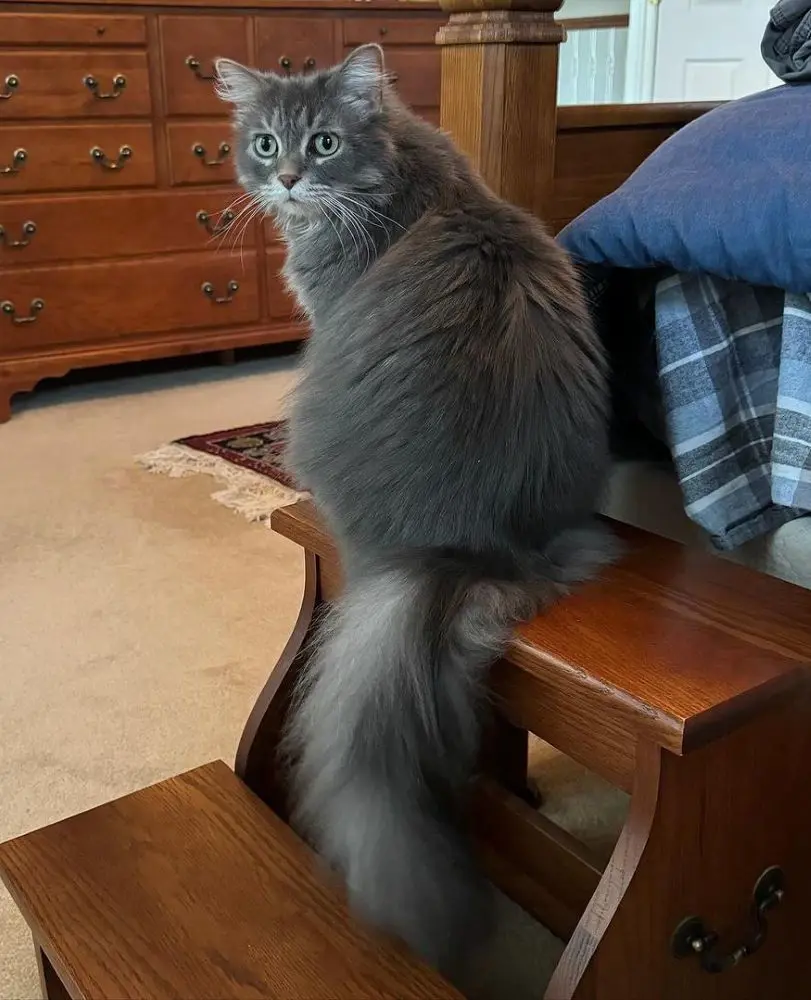
While cats generally twitch their tails when they're happy, the motion is gentle and much different from their usual sharper twitches. Tail twitching in happy cats is often a sign of excitement or contentment rather than pure joy; cats are less expressive about happiness than dogs.
If a cat is in a good mood and feeling playful, you might notice its tail held upright along with the tip gently twitching. For instance, you might have noticed the cat welcoming you with its tail held high and occasional flicking; this is a positive sign that your pet is happy to see you.
Meanwhile, in moments of intense affection or excitement, the tail may quiver slightly. If these tail twitches appear alongside other positive body language, like relaxed ears, slow blinking, or purring, the cat is content with its home and family.
What Is Twitchy Tail Syndrome?
Scientifically known as feline hyperesthesia syndrome (FHS), twitchy tail syndrome is a neurological condition in cats that causes sudden, involuntary muscle spasms, particularly around the tail and back. Cats with FHS experience heightened sensitivity around their tails and lower back areas, often resulting in discomfort and anxiety.
While the exact cause of FHS is unknown, the disorder is credited to a combination of factors, including stress, anxiety, or abnormal electrical activity in the brain. Meanwhile, some experts believe it may be linked to obsessive-compulsive disorder (OCD) in cats, while others consider it similar to neuropathic pain in humans.
Additionally, the symptoms of twitchy tale syndrome can vary, ranging from excessive tail twitching and tail chasing to sudden bursts of hyperactivity. Other physical symptoms include dilated pupils, over-vocalization, and stress. The cat may also become sensitive to touch and may react negatively to petting.
The condition is not lethal, but it can be distressing for both the cat and the owner. Fortunately, FHS is treatable, though there is no cure. Treatment usually involves a combination of stress reduction, dietary changes, and sometimes medication.
Top Lists
